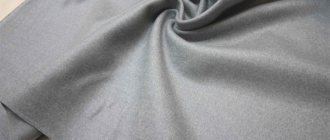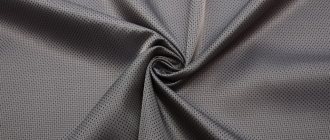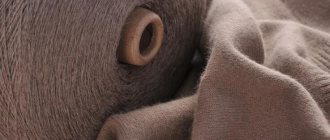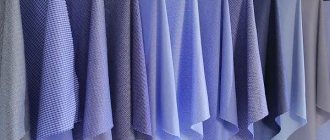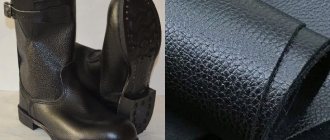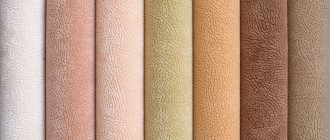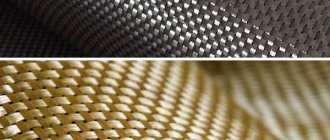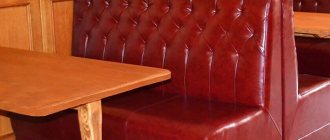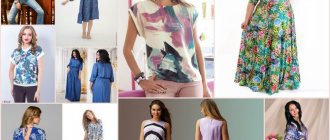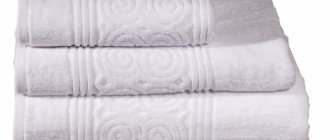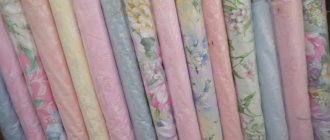Features and characteristics of artificial down
Due to the specific structure, hollow, airy structure of the main microfiber, the material has the following quality characteristics:
- first-class thermal insulation properties;
- resistance to deformation, preservation of the original shape;
- high levels of physical characteristics - structural homogeneity, softness, lightness, elasticity, airiness, plasticity;
- biostability - it is not penetrated by: harmful insects (dust mites, bedbugs, moths), pathogenic microflora (fungi, mold), unpleasant, specific odors;
- low maintenance requirements.
Excellent performance properties - dirt-repellent properties, no shrinkage, stretching, or clumping when washed or worn.
Composition: what is the filler made of?
Depending on the type of synthetic down, the materials for its production can be: polyester microfibers impregnated with silicone, membrane fiber with hollow fibers, siliconized polyester, polyester. During the manufacturing process, many synthetic, ultra-fine strands of fiber are combined to create a springy, seamless web of material. Read about mattresses for garden swings here.
What properties does it have?
Main properties of synthetic insulation:
- lightness at the same time with excellent thermal insulation;
- homogeneity, porosity of the structure;
- comfortable air circulation for the human body;
- softness;
- low hygroscopicity, hydrophobicity, moisture resistance;
- elasticity;
- wear resistance;
- easy restoration of shape, no caking;
- absence of extraneous sounds during operation;
- no migration from under the outer covering material.
Advantages and disadvantages
Positive qualities of padding material made from synthetic fluff:
- Heat retention at very low temperatures, high wind speeds.
- Durability, wear resistance. The duration of wearing outerwear is 5-6 years, the service life of pillows, blankets, bedspreads, etc. is more than 10-15 years.
- No shrinkage, stretching when worn or washed.
- The ability to maintain the original shape, thickness, volumes throughout the entire period of operation.
- Not allergenic.
- Water resistance.
- Air permeability, constant air exchange.
- Absorbing odors.
- Full environmental compatibility with the human body.
- Wide scope of application.
The advantages include ergonomic operation, low maintenance requirements, and storage conditions.
The disadvantages of the filler include:
- easy electrification, tendency to accumulate static electricity;
- lack of ability to absorb moisture;
- the possibility of causing overheating of the human body when staying in a warm room for a long time, wearing clothes with such insulation;
- rapid destruction of the fiber structure of the material, reducing its heat-protective properties with very frequent washing.
Production: how to get it
The technology for forming the fiber of the padding material depends on: the type of artificial down obtained, the thickness/length of its pile, and linear density. Main stages of the production process:
- production of the finest fibrous threads;
- processing them with silicone emulsion (siliconization);
- carding of fibers - to obtain a single-layer/multi-layer fabric in the form of spirals;
- twisting fibers, twisting into curls - to make fluff in the form of balls;
- formation of fluffy fabric;
- thermal welding (bonding) – furnace heating of raw materials for weaving and fusing fibers.
What is warmer and better: holofiber or padding polyester, artificial and natural down?
ability to retain heat well, lightness.
Yes, but these same qualities also distinguish artificial materials for filling down jackets! Moreover, sometimes they are even lighter than natural ones, and they retain heat better - at least some.
difficulty of washing;
the need to use waterproof materials for the top and lining;
ability to cause allergies.
This material has many positive properties:
- Light weight
- Excellent thermal conductivity and heat retention ability
- Low price
- Hypoallergenic
- Does not absorb odors
- Not electrified
Synthetic winterizer is not the best insulation, as it gets wet and accumulates moisture. At the same time, the material has a low thermal insulation rate. It is an order of magnitude higher than holofiber.
Natural down is a competitor to holofiber. Products made from it are as warm as possible. But down has one huge drawback - the price. In addition, down gets wet in rainy weather. There are also some difficulties when washing down jackets with natural feathers. If we take into account all these indicators, then holofiber is an ideal option.
Many people get lost in the variety of polyester insulation materials, which have different names. Synthetic down, holofiber, thinsulate - how to distinguish them and not make a mistake when choosing a down jacket or jacket for a child? It is worth finding out the main characteristics of these materials, comparing the pros and cons in order to make an informed choice. What is the difference between the most popular insulation materials on the market?
Elastic holofiber
Holofiber
The developers of holofiber were inspired by the properties of reindeer fur, each fiber of which has a cavity filled with air inside. This feature allows the animal to feel comfortable in the most severe frost. It’s not for nothing that residents of the north use reindeer fur coats everywhere.
Holofiber partially replicates the structure of natural fiber: it also has a cavity inside each fiber. At the same time, synthetic fiber has the advantage that it is not hygroscopic, that is, it almost does not get wet. After washing, the fibers dry quickly and restore their original volume. Thus, washing and drying do not affect the thermal insulation properties of the insulation.
The fibers are thermally bonded together, which makes the material durable. In addition, soldering the threads using high temperatures eliminates the use of glue, which reduces the likelihood of toxicity.
Holofiber has a lot of advantages:
- environmental friendliness – absence of harmful and dangerous substances in the composition;
- strength - thermal bonding allows you to achieve special reliability of the material;
- fungus, microorganisms, and dust mites do not grow in the insulation;
- elasticity – holofiber keeps its shape even after washing;
- flammability resistance;
- wear resistance.
Holofiber also has disadvantages. Among them:
- Low hygroscopicity. This material does not absorb moisture well, which is not always convenient - you can sweat in clothes with this insulation.
- Price. The price of synthetic insulation is low, but holofiber is more expensive than some of them.
Synthetic down
Synthetic down
- Hypoallergenic, environmentally friendly. No toxic materials are used in the production of synthetic fluff. This filling does not accumulate dust, parasites do not grow in it, and microorganisms do not multiply.
- Silicone treatment enhances the water-repellent qualities of this material. If synthetic down gets wet, its thermal insulation properties will remain intact. In clothes with such insulation you can walk in frost down to –30°C.
- Has increased wear resistance. Things with this insulation will last a long time without losing their qualities. Unlike polyester, natural down can penetrate over time through the loose weave of a pillow cover or outerwear fabric.
Thinsulate
- Excellent thermal insulation properties. In this regard, you can use less material to insulate outerwear - things with Thinsulate are very light, warmer than they seem, and do not hinder movement.
- Wear resistance. Products made with this material retain their appearance, shape, and elasticity for a long time, even after regular washing.
- Hypoallergenic and environmentally friendly.
- Easy to care for.
This filler has no critical drawbacks. At the same time, Thinsulate is an artificially created material, and it has all the properties of synthetic fibers. For example, low hygroscopicity is not always preferable, and small volume sometimes makes it difficult to choose the right clothes with this insulation for the weather. If you wear a jacket with Thinsulate, designed for frost, in a warm autumn, overheating is possible.
Another representative of polyester fillers is Valterm. It is not much different from its analogues. This material consists of many microcells in which it is capable of retaining warm air indefinitely. In Russia, Waltherm is less common than holofiber, but its thermal insulation properties are almost the same.
Varieties
The modern artificial insulation market offers a wide range of padded synthetic down. The classes and types of such materials differ from each other:
- Production method.
- The structure of the main fiber.
- Wear resistance coefficient.
- Some quality characteristics.
Thinsulate
Thinsulate is the lightest, thinnest, most elastic type of artificial down. It was originally developed to insulate the clothing of astronauts and polar explorers. To obtain insulation, they use the finest, with a high content of silicone impregnation, twisted, intertwined at different angles, spiral-shaped polyester fibers. Read about the description of corduroy furniture fabric here.
Special characteristics of the filler:
- does not shrink, does not deform;
- There are 15 modifications, subclasses;
- fire resistant;
- does not absorb moisture at all and does not get wet.
Thinsulate thread thickness is 70 times thinner than human hair, the material is 2 times warmer than natural fluff.
This type of filler is indispensable when sewing:
- special tourist and military uniforms;
- fishing, hunting, ski suits;
- shoes
Comforel
Artificial filler Comforel is a non-woven material made from hollow polyester fiber using special heat treatment and water-repellent impregnation. Its characteristics and properties:
- fluffy fiber has a structure in the form of twisted, interlocking small balls (Ø 5 mm);
- antibacterial impregnation that prevents the appearance of dust mites, mold, and mildew in the fiber;
- hypoallergenic;
- not electrified.
It is able to hold products well and restore shape after compression and washing.
Holofiber
Holofiber and thermofiber are fibrous insulation made from silicone-coated polyester or polyester. Its structure consists of hollow, intertwined spiral fibers, with air layers (cavities) between them. Read about Ivanovo knitwear Russia at this link.
Depending on the operational characteristics and its purpose, Holofiber comes in the following types:
- Volumetric is a voluminous fiber for giving shape.
- Puffs – filler in the form of balls.
- Soft, tech - with a special coating on the upper/lower parts that keeps fibers from migrating in the fabric.
- The medium is especially gentle and soft.
- Hard – thick, dense, retains its shape well.
Synthetic
Synthetic down is insulation made from polyester threads impregnated with silicone. How to choose a mattress protector for a mattress, read this article.
The fiber was developed taking into account the characteristics of the human skin structure, provides high thermal insulation, is safe, completely environmentally friendly, and does not cause allergies.
Unlike fibertek insulation, synthetic down has a number of disadvantages:
- poor air circulation in the fibrous structure;
- holds its shape worse under load.
Under the influence of washing and sweat, after 3-4 years it begins to lose the quality of thermal insulation;
Which filling is better for a sleeping bag - down or synthetic?
As noted at the beginning of the article, it largely depends on the circumstances! Since it is difficult to foresee all the circumstances, we will consider only a few generalized examples.
For winter hiking, mountaineering and traveling in extremely cold temperatures, a down sleeping bag is indispensable, as down still leads in warmth/weight ratio.
athlete price
Sleeping bag Deuter 2021 astro pro 600 (-10c°) left bay
33 190
Buy
athlete price
Sleeping bag Deuter 2021 astro pro 800 (-15c°) left midnight
37 990
Buy
athlete price
Sleeping bag Deuter 2021 astro pro 1000 (-20c°) left granite
43 690
Buy
Sleeping bag Marmot trestles elite eco 0 (lion) orange haze/dark steel
22 590
Buy
For the same reason, down is especially good for ultra-light travel styles, as well as for cyclists or climbers for whom weight and volume are important.
Sleeping bag BASK 2021 trekking v2-s pine green/green
15 500
Buy
Sleeping bag The North Face blue kazoo high rise gray/hyper blue
32 290
Buy
athlete price
Sleeping bag Deuter 2021 astro pro 400 (-4c°) left spring
26 790
Buy
athlete price
Sleeping bag Deuter 2021 astro 550 (-5c°) left vranberry
24 790
Buy
Down sleeping chalk is ideal for short hikes, when there is a regular opportunity to dry things properly.
The disadvantages of down filling begin to appear in humid climates on long hikes where there is no way to regularly dry the equipment. In this case, every day the sleeping bag will begin to absorb moisture more and more and gradually become damp. For such conditions, synthetics are the best choice.
Sleeping bag Marmot trestles elite eco 0 (lion) orange haze/dark steel
22 590
Buy
athlete price
Sleeping bag Deuter 2021-22 exosphere -6° sl right maron/mango
17 690
Buy
athlete price
Sleeping bag Deuter 2021-22 exosphere -6° sl left maron/mango
17 690
Buy
Sleeping bag Marmot trestles elite eco 20 long (lion) estate blue/classic blue
20 290
Buy
For water hikes and canyoning, the choice is definitely a synthetic sleeping bag, which is not afraid of getting wet, unlike a down one.
High-latitude, long-term polar expeditions, as well as tourist skiers on serious hikes, most often use “synthetics” as their main sleeping bags, combining them with down or synthetic blankets, which they use to cover themselves from the falling frozen condensation from the ceiling of the tent.
Special blankets for protection against condensation at Kant:
new
Bedspread THERM-A-REST 2021 stellar blanket bison print
8 450
new
Bedspread THERM-A-REST 2021 stellar blanket sunray print
8 450
new
Bedspread THERM-A-REST 2021 argo blanket tomato
9 490
new
Bedspread THERM-A-REST 2021 argo blanket green print
9 490
new
Bedspread THERM-A-REST 2021 stellar blanket deep pacific
8 450
In addition, it is better to take a synthetic sleeping bag with you if you are traveling through dry, dusty regions and deserts, or prefer hitching and couchsurfing. In this case, you won’t have to worry about going to bed right in the middle of sand dunes or somewhere on the floor of a station, or on mattresses of dubious cleanliness, with equally dubious hosts.
athlete price
Sleeping bag Deuter 2021 dreamlite left navy/cranberry
7 090
Buy
athlete price
Sleeping bag Deuter 2021 dreamlite l left navy/cranberry
7 790
Buy
athlete price
Sleeping bag Deuter 2021 orbit 0° - l left bay/steel
10 090
Buy
athlete price
Sleeping bag Deuter 2021 orbit +5 right granite/steel
8 390
Buy
For road trips or just a family vacation in nature, when most of the time all things are traveling by car and not on your shoulders, you can purchase a more budget-friendly synthetic sleeping bag, since there is no point in overpaying for a more expensive down filler.
athlete price
Sleeping bag Deuter 2021 orbit -5 left cranberry/steel
10 390
athlete price
Sleeping bag Deuter 2021 orbit -5 sl left cranberry/aubergine
10 490
athlete price
Sleeping bag Deuter 2021-22 orbit 0° sl left bay/aubergine
9 990
Buy
athlete price
Sleeping bag Deuter 2021-22 orbit -5° sl right cranberry/aubergine
10 890
Buy
Although, if a comfortable sleep is important to you, especially for lovers of glamping and feng shui tourism, and the high price does not bother you much, then feel free to buy a sleeping bag with natural down - it is more pleasant.
Scope of application: what to sew
The qualitative characteristics of artificial down material allow it to be used for stuffing and insulation:
- outer demi-season, winter clothing for adults, children;
- things, hats for tourism, hunting, fishing, sports;
- clothing for special purposes (suits for firefighters, submariners, etc.);
- shoes;
- upholstered furniture, individual elements of its decor;
- items, accessories for sleeping, relaxation (mattresses, sleeping bags, blankets, pillows);
- elements, home decoration items;
- soft toys, children's goods;
- things of your own, homemade handicrafts.
Winter clothes
Winter outerwear and hats insulated with artificial down are the best choice for the capricious, wet, frosty winter season.
Due to the presence of air in the cavities between the fibers of the main threads of the material, even a thin layer of such filler in a down jacket provides:
- good thermal protection at very low air temperatures (up to -35°C);
- protection from moisture and precipitation;
- freedom of movement, comfortable wearing.
Manufacturers of warm clothing use synthetic down not only to fill the internal space of products, but also for their external, decorative edging. Eskar will tell you about Roman roller blinds in this material.
Average cost of fillers
Alas, often the determining factor when choosing a pillow is its cost. And this is not surprising, because the difference in price between products can reach 5–10 times. Therefore, we have compiled a comparative table of approximate prices for 50x70 cm pillows with different fillings.
| Minimum price for sleeping pillows | |||
| Natural fillers | Synthetic fillers | ||
| Down and feather | 700 rub. | Sintepon | 200 rub. |
| Camel or sheep wool | 1300 rub. | Holofiber | 400 rub. |
| Natural silk | 12000 rub. | Thinsulate | 1000 rub. |
| Cotton | 1000 rub. | Microgel | 2000 rub. |
| Bamboo | 1800 rub. | Microfiber | 1700 rub. |
| Lyocell | 3500 rub. | Memory foam | 7000 rub. |
| Latex | 3600 rub. | Minimum prices for decorative pillows | |
| Buckwheat husk | 500 rub. | Healing herbs | 600 rub. |
| Seaweed | 600 rub. | Expanded polystyrene | 1300 rub. |
Please note: the table shows the minimum prices for pillows. If the cost of the product is lower, most likely the manufacturer used a mixed filler, supplementing the expensive natural material with synthetic fibers.
Recommendations for product care
Basic principles for caring for products filled with artificial down:
- ventilate outdoors several times a year;
- shake and fluff pillows and blankets daily;
- ironing as necessary, with iron t +100°C;
- wash when dirty;
- You can store folded in a closet, on a hanger, or in vacuum bags.
Before you start washing or cleaning a product with synthetic down inside, pay attention to the type of material from which its upper part is made. It often happens that the covering fabric requires a more delicate approach than the filling.
How to wash
To remove all dirt, each item containing down is washed separately from other items. Particularly dirty areas (collar, cuffs, hem, sleeves) should be pre-treated with a suitable cleaning agent. You can wash it by hand or use machine wash.
Required washing machine mode: delicate, with water t 40-60°C.
Suitable detergent for washing: liquid or gel (rinses well, prevents clumping), without bleaches or chlorine-containing substances.
After washing:
- You can spin it manually or using a washing machine centrifuge;
- the thing must be shaken;
- dry in a vertical or horizontal position, well straightened.
Best pillow filling for sleeping
If we do not take into account orthopedic pillows (they have completely different requirements), then the leaders among all fillers are silk, lyocell, microfiber and microgel. The combination of their characteristics is optimal for sleep. Well, it’s up to you to decide which bedding is optimal for your family, focusing on your budget and personal preferences.
| Silk | Lyocell | Microfiber | Microgel | |
| Advantages | antibacterial and thermoregulating properties, softness, elasticity, hygroscopicity, durability | positive effect on the respiratory system, antibacterial properties, lightness, elasticity, hygroscopicity | hypoallergenic, ability to retain heat for a long time, hygroscopicity, quick drying after washing, do not accumulate static electricity | very soft, lightweight, elastic, moisture-resistant, breathable |
| Flaws | high price | high price | lack of breathability, may cause sweating | the highest price among synthetic fillers |
| Features of care | can be washed on a delicate cycle, after washing you need to beat it well to restore its shape | Can be washed in a washing machine on a delicate cycle | Can be machine washed at 60 0C. | machine washable at 30 0C |
| Lifetime | 10–15 years | 5–7 years | 4–5 years | 5–7 years |
| Price | 12000 rub. | 3500 rub. | 1700 rub. | 2000 rub. |
So far, the only thing in which natural materials cannot surpass synthetic fillers is breathability. Therefore, if you sweat excessively, it is still worth purchasing a pillow stuffed with eucalyptus fiber, bamboo, silk or feather.
Pillows with any filling
Best prices for bulk purchases
Pillows with natural and synthetic filling in the catalog
View in the catalog
Alternative
An alternative to natural down is not only its synthetic prototype, but also bamboo padding made from natural raw materials, non-toxic eco-fiber, bio-down created using innovative technologies, and artificial swan down - nanometer.
Which is better: natural or artificial down?
Today, a product made from 100% natural down and waterfowl feathers is quite rare and very expensive. But is it worth spending money on a down jacket with expensive padding if a synthetic analogue with similar characteristics (thermal insulation, lightness, softness) does not have such negative properties of natural down as:
- the need to comply with special care rules;
- pressing after improper washing, exposure to moisture;
- sensitivity to foreign odors;
- frequent susceptibility to attacks by moths and insect-eaters;
- possibility of allergic reactions.
Artificial swan down or bamboo fiber
Bamboo fiber, like synthetic swan down, is used as padding material for pillows, blankets, and mattresses.
Similar quality characteristics of these two types of packing:
- durability;
- hydrophobicity;
- environmental safety for the body.
Properties that distinguish bamboo filling from synthetic down:
- The raw material for the fiber is not synthetic materials, but cellulose from natural bamboo.
- The best indicators of air conductivity and ventilation.
- Natural antibacterial properties. The global expert company SGS recognized that 60% of pathogens placed on bamboo fiber die on it within 60 minutes.
- Thermoregulation, the ability to maintain a comfortable temperature of bedding - warm in winter, cool in summer.
Holofiber: warm and fluffy
difficulty of washing;
Fibers have the ability to retain heat by trapping warm air heated by the human body. The material treated with adhesives does not absorb water and is strongly blown by the wind.
Important! Sintepon does not retain heat well. Products sewn with a lining made of this material are suitable for winter with temperatures not lower than −5 degrees. Coats with padding stitch are blown by the wind.
Synthetic jacket
There is a significant difference between padding polyester and holofiber. The latter has the same heat-insulating qualities as natural wool and down. Things with such filling are suitable for winters in central Russia. At the same time, things allow air to pass through and allow the body to “breathe.”
Both fillers are superior in their ability to warm a person than the non-woven material Thinsulate, invented in the USA. For a long time, filler was used only in the manufacture of special clothing for space researchers. Thinsulate is small lumps consisting of thin, spiral-twisted fibers connected into a single substance. Not all seamstresses can distinguish white fluffy lumps from the usual holofiber.
Thinsulate
Translated from English, “holofiber” means “hollow fiber”. Indeed, this innovative material consists of thin polyester fibers with air inside. It is its presence both outside and inside that provides the wonderful warming qualities for which this material is famous.
Each holofiber fiber is twisted into such a tight spring that it seems like a small ball. In general, the mass of insulation resembles a fluffy snowdrift or an air cloud.
The method for producing holofiber was developed and patented in 2005 by Moscow, which produces several types of material:
- non-woven fabric - often used for the manufacture of outerwear;
- slabs of various thicknesses - used in construction for insulating structures, as well as in furniture production;
- Balls are an indispensable filler for pillows, blankets and mattresses.
Even at the manufacturing stage, holofiber fibers are subjected to sterilization, so in future use they can withstand not only numerous washes, but also hot steam treatment and even boiling.
Another modern insulating material, Thinsulate, has similar characteristics. The difference between it and holofiber is that Thinsulate is similar in its properties to natural swan or eider down - just as weightless and warm.
Characteristics
In terms of performance characteristics, holofiber resembles high-quality cotton, but unlike it, synthetic material is much more resistant to abrasion, does not bunch up and does not lose its original shape.
In addition, holofiber has the following qualities:
- high level of heat and sound insulation;
- breathability;
- increased elasticity and softness;
- resistance to numerous deformations;
- hypoallergenic and safe;
- high elasticity;
- no static electricity.
Holofiber is not susceptible to rotting, mold, pathogenic bacteria and microorganisms, does not accumulate odors, and therefore is an indispensable material in bedrooms and children's rooms.
Where is it used?
Many different products are produced under the “holofiber” brand. The most common areas of use of this insulation are:
- sewing outerwear - jackets, coats, overalls, raincoats;
- production of pillows, blankets and mattresses;
- production of upholstered furniture;
- filling children's toys;
- insulation of buildings under construction;
- filtration of air systems.
In addition, holofiber fabric is even used in the aviation and space industries.
Jackets and coats with holofiber are as warm as down jackets, and these products are much easier to care for. It is enough to remember a few simple rules.
- Holofiber can be washed by hand or in a machine; pre-soaking of the products is not required.
- You can use machine spinning at low speeds and drying in a centrifuge.
- Holofiber tolerates cleaning well with any chemical means.
- After drying, shake the clothes vigorously to give them their original appearance.
- Ironing is not used for holofiber products.
conclusions
- Artificial down is an ultra-thin, high-quality filler material for insulating clothing and household items, an excellent alternative to natural down.
- Outerwear and household items with synthetic down filling do not absorb unpleasant odors, do not accumulate dust or dust mites.
- After washing, exposure to moisture, products with synthetic down dry quickly, do not deform, and do not lose their shape.
- When washing and cleaning products with synthetic down filling, be sure to take into account the characteristics of the upper covering material.
Rules of care
In order for something with insulation to last a long time, you should take proper care of it. One of the main rules is the prohibition of soaking clothes or blankets for a long time. The maximum recommended time is thirty minutes. Under no circumstances should you bleach overalls or jackets filled with synthetic padding polyester or holofiber. The procedure will negatively affect its quality. Drying should occur at room temperature. Before cleaning, it is better to carefully study the clothing label and follow only it.
As a rule, washing can be done at a temperature of 30 degrees. Products with synthetic filling can be machine washed.
It is not necessary to squeeze such a thing. Clothes should be hung on a hanger, pillows and blankets should be placed on a linen rack.
If the synthetic fiber has matted or become less voluminous, you can beat the jacket with a stick, or you can remove the filler by making a small cut on the reverse side and comb the synthetic fiber with a special device. Then the insulation is returned to its place, and the jacket is re-quilted.
To learn about which filler to choose for a toy (sintepon, padding polyester, holofiber), see the following video.
